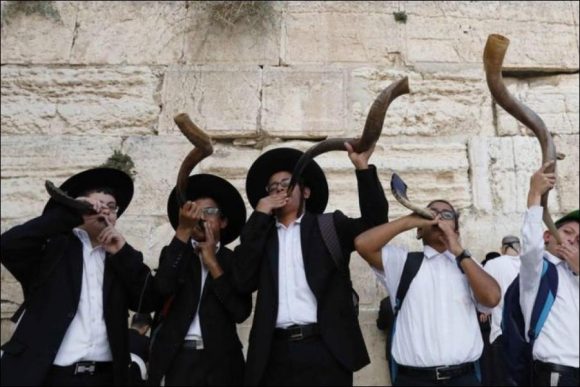Jewish New Year Rosh Hashanah is a tradition celebrated annually by Jews around the world. In Hebrew it means baş the beginning of the year ”and is celebrated by participating in prayer ceremonies in the synagogue, listening to the sound of an ancient musical instrument made of horns, and eating various symbolic-and delicious-foods. Here’s everything you need to know about the two-day celebration.
When is it celebrated?
Rosh Ashanah starts on Sunday evening of September 29th and ends on Tuesday evening of October 1st. The days of the Eid in the Gregorian calendar change every year because the Jews use a calendar based on the movements of the moon and the sun.
Rosh Hashanah is celebrated every year on the first day of Tishri, the first month of the Jewish calendar. In the Gregorian calendar, Tişri always coincides with the days of September or October.
Rosh Hashanah marks the beginning of 10-day repentance in Judaism. This period reaches its peak with Yom Kippur, the holy day in which Jews fast and pray for their sins.
You can use the words “Shana Tova which means “good year” or “Shana Tova Umetukah” which means “good and pleasant year için to wish Jewish people a happy new year.
Remember what?
Rosh Hashanah celebrates the Jewish New Year and points to the creation of the universe. In Judaism, it is taught that Hashem (God) created the universe in six days.
This six-day period, which includes the creation of Adam and Eve on the sixth day (saturday), ends with the seventh day, the day of rest, celebrated by the Jewish people in Sabbath every week.
Chabad, an Orthodox Jewish Hasidic society in Britain, describes Rosh Hashanah as “the birth of the universe, the day God created Adam and Eve, and the first day of the Jewish year.”
How is it celebrated?
Just as in Shabbat, religious Jewish people avoid certain activities during Rosh Ashanah, such as using electric tools, driving or writing.
It is a tradition to attend prayer ceremonies in the synagogue during the feast. During the prayer ceremonies on both mornings of the religious holiday, the chofar, an ancient musical instrument usually made from the ram, is blown. If a person is blowing a chofar in Rosh Ashanah, he is told to make sounds of different lengths.
Continuous long sound is called Tekia, short three blowing is called Şevarim and 9 times short, cut and strong blowing is called Terua. It is traditional to hear the chauffeur blowing 100 times throughout Rosh Ashanah.
One of the traditions of the religious holiday is Taşlik, which comes from the word “pouring de in Hebrew. On the first day of Rosh Hashanah, the participants of the ritual visit the water source (usually a river or stream) and read their special prayers. Some Jews throw bread in the water as part of the tradition, but according to Chabad it was rejected by rabbis in the 14th century.
Views: 326



